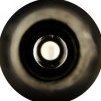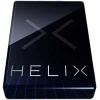Leaderboard
Popular Content
Showing content with the highest reputation on 05/20/2020 in all areas
-
After having just finished upgrading to 2.92 and having been through all the angst of doing upgrades over the last 4 1/2 years before the release of 2.90, I say the new FW updating feature beats them all other features ever added to the Helix!!! I'll also say I'll now have very little patience for anyone having trouble with upgrades after all the hell us old-timers have gone through in previous years....2 points
-
On my Windows 10 machine Helix Edit 2.92 won`t start. Reinstalling of Helix Edit 2.90 works perfect. I have tried many times: deinstalling all line 6 stuff including drivers, rebooting and clean install of the 2.92 application - nothing works. This is the first time in nearly 5 years of owning the Helix Floor - and i have done every update without a problem. Now i am back to 2.90 - anyone else ?1 point
-
i GAVE UP, MATE. BETTER USE MY "LAZY" TONE AND PUT MORE DRIVE IN IT AND SAVE IT AS "LAZY". SEE? ELBOWS!1 point
-
Just letting everyone know that if you have a Microsoft Surface book and are trying to run the latest HX Edit 2.92 software, it will not load if the keyboard is attached as the keyboard contains a GTX 965M Graphics chip. If you detached the keyboard HX Edit 2.92 then it will happily load as normal and you simply re attach the keyboard and it works fine. I suspect that it has something to do with latest NVIDIA Driver that was installed on the 15th May 2020 via windows update.1 point
-
Yeah, I get that. I guess a lot of folks actually think companies are perusing forums for such ideas; some do of course, but most don't. I sometimes use the line as something of a rhetorical "full stop". I do think it's a brilliant idea, though, so I can't imagine someone at Line 6 R&D hasn't already considered it as a way to expand the Helix ecosystem. The recent unification of the Helix product line with the Helix Core engine opens up a lot of possibilities for Helix Core based products and the "HX Switch" is the next logical progression of the Helix line.1 point
-
You will need to contact support to verify your warranty and see what your service options are. Being in South America, it looks like you are going to have 2 options. For web support, open a ticket online, or for phone support, you will have to contact a distributor in your area. Click the link below to get more info. https://line6.com/support/tickets/1 point
-
1 point
-
1 point
-
Pretty wellknown problem. Cheap hardware. As with quite some other parts. Unfortunately, I should add - and yes, I'd happily pay 100 bucks more for the unit in case the questionable parts were of durable quality. Things coming to my mind: XLR out that is not dealing well with phantom power. Joystick that is wearing out quickly (why a joystick at all in case it suits no purpose?) and oviously has sloppy soldering joints on lots of units. Mic preamp not unlikely to burn out in case you activate phantom power in the wrong order. Volume knobs becoming pretty stiff. LEDs that stop working (maybe not as common as the other issues but it happend with my tap tempo LED. These are the things that are getting used (and moved!) a lot, so they'd better be at least pretty decent. Replacing all of these in favour of at least something more durable would perhaps add around 50-100 bucks (likely less). As said, I'd be more than willing to pay that.1 point
-
1 point
-
That's a really good idea. ES-8 is irreplaceable for its signal chain routing functionality and it's obscene control of buffers. Each individual loop has a buffer on the loop input and the loop output, (nope just input and output buffers) as well as guitar input buffer and ES-8 out buffer, each one of those buffers can be on or off programmed per preset. Then you can re-order the signal chain of the loops, as well as drop loops down onto a parallel path. It's legit like working with a Helix but using your own 8 pedals, reorder, swap, buffers on/off per pedal, parallel distortion with clean DI reverb, dry clean compression with a volume pedal that can bring in a screaming delay lead in parallel, no end to the combinations. And that's before you add midi control, ES-8 can take expression input and spit it out as midi to anywhere you want, even multiple CCs at once.1 point
-
1 point
-
Talking about a pedal switcher, 8+ loops and maybe some built in FX (like ms-3), but capacitive switches, line 6 UI, and super compact form factor. It would sell like crazy, the ES-8 does even without effects built in.1 point
-
So my PODHD500X is not compatible with Catalina???? I downloaded the new HD Edit software that is supposedly for Catalina!! What am I supposed to do now as I can't use it?1 point
-
Another strong NO to ASIO4ALL. While going digital seems a logical choice, I can't tell the difference between recording a digital signal from the Helix and recording the Helix through the analog inputs on my Scarlett. Not that I'm opposed to digital tech (obviously, I have a Helix) but most of the recorded music I like best was recorded with a tube amp through a microphone and onto tape, then gouged into vinyl, tracked by a needle whose vibrations were converted into the electrical signals that were reproduced by a paper cone speaker, so.....1 point
-
Just for the record... I don't find your setup over complicated at all. If you look at some of the "Rig Rundowns" on You Tube it is evident that many guitar players we may assume have simple rigs actually do not!1 point
-
That sounds like the kind of overly complicated and difficult rig that would be GREAT fun to mess around with.1 point
-
If you are asking if your approach will work... yes, it will. That is exactly how you can set it up. Don't forget to insert a LOOP Block in the HX Effects and turn it on. All of these units (ES-8, HX Effects, etc... etc... ) have multiple in/out/loops for a reason. If you need them, use them! It doesn't matter if someone else finds your setup complicated... if it works for you, that's what matters.1 point
-
Here is a document I have been working on but is not really ready for prime time yet. It is drawn from a variety of unquoted sources (my bad) and as I mentioned not yet fully edited but in the interests of giving you some general knowledge to work with I will post it up. There are probably other users on the forum who can provide more explicit settings for the compressors on the Helix and there are also user provided presets on CustomTone (good luck sorting through them) that serve as great examples. Anyway, here goes, a completely deranged and disorganized guide to compression that is designed to give you a working knowledge of compressor settings and operation rather than provide you with the settings but may nonetheless shed some light on the subject. There is a great link to suggested compressor settings for a variety of instruments as well as some other sample settings towards the end of this post. There is also a section further down on how to use the Helix 'LA Comp' compressor as well as a general section that applies to the Helix's 'Deluxe Comp'. For those of us who use compressors in a preset, most of us probably have it on all the time (and that is ok), or perhaps have it setup to switch off when we want more dynamics, for instance when we kick in a distortion pedal or heavier sound on a solo via a snapshot or pedal assign. I think however that the compressor is a prime candidate for assigning parameters to snapshots so that you can change the values on the compressor to match your tempo, attack, or song part (intro, verse, chorus, solo, bridge, outro) instead of just switching it in and out or leaving it on all the time. The HX line of devices added a gain reduction meter to the firmware at some point. You can use this by selecting any compressor block and look to see when the threshold you set is being crossed, and also how long it is being engaged until it is released. The gain reduction meter is extremely helpful for setting the threshold and release settings. I have gathered a bunch of notes together over time from various websites regarding compression so this work is the result of others much more well versed on the subject. My apologies in advance for any inadvertent plagiarism. I would be happy to cite sources or remove text if anyone sees their text here. Some notes may be redundant as they came from a wide variety of sources. I hope this assists some folks in getting their heads wrapped around compression parameters and their usage in different scenarios with the guitar and bass but also with vocals, drums, etc.. Why use compression?: Reduce sudden peaks/spikes. Smooth and make levels more uniform and less jarring on guitar, bass, drums, vocals or other instruments As a boost Add sustain, particularly on clean presets, but can also sound great with distortion and overdrive Articulation, dynamics (incorrect settings can squash these) Push an instrument more out front Make an instrument sit better in the mix 'Chicken pickin', funk, and other particular genres or styles Special effects (sometimes pumping or breathing can be a good thing) Suppressing microphone feedback, 'ringing' out a PA Leveling overall recording output in the mastering process Reduce masking of overlapping frequencies between instruments by sidechaining (description further down in document). First a brief description of common compression parameters (the 'Deluxe Comp' on the Helix has all these settings): Note: On some simple, for example two knob compressors, two or more of these parameters' functions may be collapsed into one knob. For example, turning up the ratio may simultaneously turn down the threshold. (contributor: njglover) Threshold is how loud your signal has to get before the compression kicks in. This is essential because you may not want your entire signal to be compressed. Some units have no threshold knob- for them, the threshold may be "fixed" and can only be adjusted by changing the input level of your signal. In other words, increasing the level of your signal by turning up the guitar volume or adding a pedal with a boost, etc. before your signal goes into the compressor. Alternatively on some two-knob compressors, as mentioned above, turning the compression knob may simultaneously raise the ratio and lower the threshold. Ratio is how much your signal gets compressed once it passes the threshold. Ratios are figured in decibels (dB); a dB is a unit of how much a signal increases or decreases relative to where it started. With a ratio of 4:1 for example, the idea is that for every 4 dB your signal goes over the threshold, the output level will only go up by 1 dB. Generally, ratios of 2:1 to 4:1 are considered light or moderate compression, and ratios of 10:1 or higher are considered heavy compression or limiting. A hard "brick wall" limiter has a ratio of infinity:1, meaning that once your signal crosses the threshold, the output will not increase more than 1 dB no matter how high the input signal spikes. Attack controls how quickly the compression reacts to your signal, and Release controls how long it takes to "let up" and stop compressing after it's triggered. These controls are interactive, and the right settings for them will vary depending on the music and your playing style. You'll have to experiment, but for some compressors (not all) a decent rule of thumb is to start with the attack and release knobs in their middle position, and adjust from there. Keep in mind that on most compressors the 'Attack' setting gets longer, aka slower as you turn the knob clockwise. That means when the knob is at its minimum, all the way counter-clockwise, the attack will be at its fastest(e.g. 1ms); this means that the compressor will almost immediately start applying compression to your signal. Somewhat counter intuitively too fast an attack setting on the compressor can actually squash your guitar's attack and dull the transients at the front of the picked note. Turn it all the way up and your attack will be its slowest setting with the compressor taking the longest time possible(e.g. 1000ms) to engage. "So the fastest attack will be the knob at 1, the slowest attack will be the knob at 10. (contributor: optimist)". Extreme min/max settings on either attack or release can cause pumping or breathing. Output Gain controls how much the volume of your signal is increased coming out of the comp, and this is necessary because compression lowers the overall average levels of your signal. Increase gain when using higher ratios and lower thresholds to maintain your output level. Almost all compressors have a booster at the end, which provides "makeup gain" to bring your signal back up to the level you want. This is what accounts for both the increase in audible sustain and harmonics, and also the increase in the noise floor. Knee - Set on hard-knee, the compressor waits until the signal crosses the threshold, then it reduces the signal at the specified ratio for a punchy sound. With soft-knee compression, the ratio gradually increases as the signal approaches the threshold, resulting in a more natural feel and a wider dynamic range. So here goes, some general information and tips on using compression in no particular order: Note: Sometimes 'pick attack' or 'string attack' is mentioned in this document and refers to how fast or hard the string is being plucked. This is not the same as the 'attack' setting on the compressor although 'pick attack' may influence your choice of the compressor's 'attack' setting. Use increased sensitivity(lower threshold) on slow attack times to make sure compressor engages. Use a higher ratio for more pronounced compression. The more compression (higher the ratio) the higher the makeup gain needs to be set. Compression ratio and threshold are related, since both increasing the ratio and lowering the threshold will result in more compression being applied to the signal. Use a fast release for faster return to normal level. Tempo as well as string attack can profoundly affect compression. Set attack and release settings shorter for fast pick attack or fast tempo otherwise you may hear pumping or the compressor may not kick in properly and miss notes that are above the threshold you set and should have been compressed. Slow attack times allow the transient and initial attack of the note to come through. Setting attack too fast/short may cause the initial attack on the string to be squashed and result in a loss of dynamics. If release time is set too long, it may compress a quieter note that rapidly follows an above-the-threshold note. Medium release allows a quieter note that is below the threshold to not be compressed. Longer release times can add sustain and sound more natural on acoustic instruments like the acoustic guitar where a note or chord may ring out for quite a while. Electric guitar ratios are often 4:1 or even 6:1 although lower settings work fine as well. You may want a lighter compression on overdriven or distorted tones as there can already be a fair amount of compression from the amp and distortion effects. A ratio of 2:1 or 3:1 may be sufficient here. Mastering and busses often uses slower attack times depending on the source material. Pumping, breathing, and distortion: Attack time settings affect the sound quality in terms of overall perceived brightness or high-frequency content. If you use very fast attack time settings, the compressor will activate very quickly, reducing gain instantly at the waveform level of the sound. However, too fast an attack or release can cause distortion or unwanted artifacts like pumping or breathing, particularly on bass or low notes as the attack and release are actually faster than the cycle(hz) of the note being played. Since transient information at the front or attack portion conveys brightness character, especially with percussive sounds, immediately reducing it with the compressor will dull the sound. Selecting a slower attack time will allow the transient portion of the sound to pass through before the compressor starts clamping. However, if the attack time is too slow, ineffective and tardy compressor action may result. Low frequencies (e.g. bass guitar, detuned or just low guitar strings) can be distorted by too fast a release time. Super fast release times, along with a fast attack time setting, will distort low-frequency sounds, as the compressor is capable of gain change within the period (the 360-degree cycle of the lowest fundamental frequency) of the sound's waveform. Likewise, over-long release time settings are another form of distortion, since gain reduction is "stuck" clamping the sound down for an unnaturally long time period. "Pumping" and "breathing" are engineer jargon words for obvious compressor artifacts or side effects with maximum compression. Sudden and usually unwanted deep gain reduction is called pumping, while a slower return (release) to operating level with a noticeable rise of the noise floor is called breathing. For a more transparent sound you may prefer a release time that has the shortest possible time that does not produce a "pumping" effect, caused by cyclic activation and deactivation of compression. These cycles make the dominant signal (normally the bass drum and bass guitar) also modulate the noise floor, producing a "breathing" effect. For more sustain you may opt for a longer release time. As previously mentioned, fast release/attack times may create distortion, since they modify the waveform of low frequencies, which are slower. For instance, one cycle at 100 Hz lasts 10 ms, so that a 1 ms attack time has the time to alter the waveform, thereby generating distortion. Compression settings especially for guitar: This is an interesting blurb regarding the Rockman compressor. The problem to solve, when you want to design a compressor for the guitar, is a double problem: Act as a limiter during the first part of the note - a strong peak (think fast attack) Act as a sustainor during the second part of the note - a slow decay (think slow release)" Side-bussing compression: You can side-buss the compressor with an EQ block to selectively compress frequencies or provide both a direct signal and a compressed signal to the mix. Sidechaining compression: You can sidechain the compressor such that for instance a kick drum hit will momentarily compress the bass guitar in such a way as to reduce the masking of the kick-drum by certain frequencies in the bass guitar. Sidechaining is essentially used to cause the trigger instrument to cause another target instrument to be momentarily compressed. Ringing out microphones and feedback in a system: A compressor can be used to aid setting up a system when it is being ringed out, i.e. its main feedback frequencies are being removed with an equalizer or a feedback elimination type unit. The compressor will have a low threshold level and infinity-to-1 ratio with hard knee characteristics. With no signal present, we will gradually increase the volume until the first feedback frequency rings. The compressor will catch it and keep it at a constant safe level, making adjusting the equalization an easier task. The process will typically be repeated until the third or fourth feedback frequency has been ringed out. Sample Compression settings (source citations needed): First a great link for compression settings for various instruments: http://anythingpeaceful.org/sonar/settings/comp.html Note: You may want to try an attack setting of 20ms-25ms or more for electric guitar. This will allow more of the initial transient of the guitar note through and make for a more articulated sound with better attack and dynamics. The recommended value of 7ms in this chart for electric guitar is fairly low although good for fast picking or catching and suppressing loud sudden peaks/jumps. An interesting article on how to set different compressors http://www.ovnilab.com/articles/setup.shtml Helix 'LA Studio Comp' Parameters And Usage Tips Note: The 'Mix' control as on most compressors can help by adding back in the initial pick attack as well as potentially brightness or tone to the signal by providing some of the uncompressed signal in your path, particularly on higher 'PeakReduc' settings. PeakReduc - This will set the 'amount' of compression and also adjust the threshold (how high the input level, or the often related, how aggressive the pick attack needs to be, to trigger compression). These two parameters(ratio, threshold) are collapsed into this single control on the 'LA 2A'. The ratio control being the ratio of dbs being reduced you are used to seeing e.g. 2:1, 4:1 and threshold referring to what input level is required to trigger compression. I don't know how or even if the attack and release are figured into the PeakReduc when it is adjusted. The original 'LA 2A' analog compressor the 'LA Studio Comp' is based on did not have attack and release controls (similar to a two knob compressor pedal) but instead used the "combination of an electro-luminescent panel and a photo-cell to determine the attack and release characteristics of the LA-2A". I am not sure how Line6 modeled that circuitry but that is what would set the attack and release in the original effect. Gain - This is referring to the 'makeup' gain knob you see on most compressors. Generally the higher you set the compression (PeakReduc) the more the signal will be reduced and the higher the 'Gain' will need to be set. "This control does not affect the compression. The gain control should be set after the desired amount of compression is determined using the Peak Reduction control. Once the Peak Reduction control is set, adjust the Gain Control to achieve the desired output level." Emphasis - Use this to have more or less compression on the sparkly high end of your guitar signal. "The LA-2A was designed for use in broadcast applications. The audio signal in FM broadcasting undergoes pre-emphasis and results in a 17 dB boost at 15 KHz. Due to this increase in signal level, transmitters are subject to over-modulation. The LA-2A provides a control (R37) which controls the amount of high-frequency compression. Increasing the resistance of this potentiometer on the original device by turning it counterclockwise will result in compression which is increasingly more sensitive to the higher frequencies." So, to put it another way, this large 17db bump at 15khz in the original LA-2A compressor meant that they built in an 'Emphasis' parameter that kept compression flat across the frequency spectrum but allowed you to apply additional compression to the high frequencies. I suppose in some respects similar to a two band "multi-compressor". I don't know exactly at which frequencies Line6 or the original effect applied that additional compression; on the original maybe around 15khz as that is where FM broadcasting signals were boosted. I am not sure of the answer to that question. It is worth noting that on the original device turning the 'Emphasis' control counter-clockwise (down) actually increased the amount of compression applied to the high frequencies. Type - This parameter will adjust the ratio settings used in the 'PeakReduc' parameter to much higher values, generally you will set this to 'Compress' for guitar. Setting it to 'Limit' will change a 2:1 ratio into for example a 10:1 ratio more ideal for limiter use. A few sample settings for different instruments: If you want to use a little compression to bring the electric guitar forward and give it some punch or sustain, try these settings. You may have to experiment with the threshold setting in particular as various compressor models use threshold differently: Threshold: 1dB Ratio: 2:1 - 3:1 Attack: 25-30 ms Release: About 200 ms Gain: Adjust so that the output level matches the input level. You don't need much added gain. To get a handle on the potential muddiness of the amplified bass guitar use a little compression. Compression can also help control uneven levels that result from overzealous or inexperienced bass players. Remember too fast an attack or release on bass because of the lower hz cycle can cause distortion as the compressor is cycling faster than the note. Try these settings for a start: Threshold: 4dB Ratio: 2.5:1 - 3:1 Attack: 40-50 ms Release: About 180 ms Gain: Adjust so that the output level matches the input level. You don't need much added gain. These are good settings for strummed or picked acoustic instruments: Threshold: 6dB Ratio: 3:1 - 4:1 Attack: Around 150 ms Release: About 400 ms Gain: Adjust so that the output level matches the input level. You don't need much added gain. The release is set very high because of the amount of sustain that acoustic instruments such as a guitar or dobro can have. If you play an instrument with less sustain, like a banjo mandolin, or even a ukulele, you may find that a shorter attack and release work just fine. Excellent video on compression - more general and less guitar-centric:1 point
-
Press and hold the Tone and Volume buttons simultaneously while powering up the amp until you flashing lights then let go. Jim1 point
This leaderboard is set to Indiana - Indianapolis/GMT-04:00







